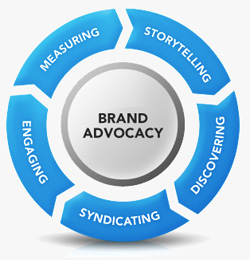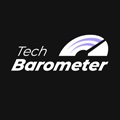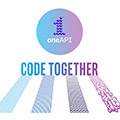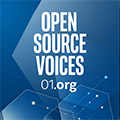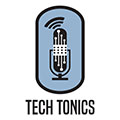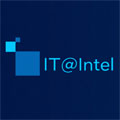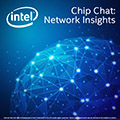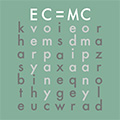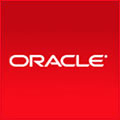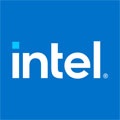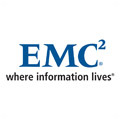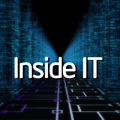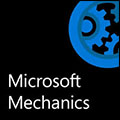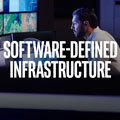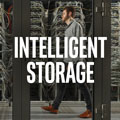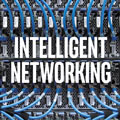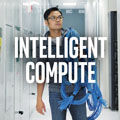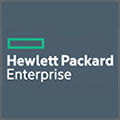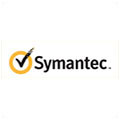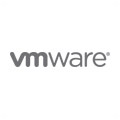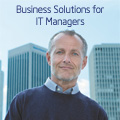Dartmouth College IT Director builds modern IT platform for AI
Video interview with Dartmouth College Director of IT Infrastructure Services Ty Peavey, who tells how his team chose the Nutanix Cloud Platform for managing virtual machines and container orchestration to support the university’s growing need for AI capabilities.
Find more enterprise cloud news, features stories and profiles at The Forecast.
Transcript:
Ty Peavey: Some people have the thought process that AI may replace what they do every day, and then there’s others that look at it to elevate what we do every day. And I kind of am in that camp. I really believe in treating AI as a tool. It’s a way to do things easier, faster, better, but at the end of the day, the human really matters.
Jason Lopez: The 2025 Enterprise Cloud Index Report found that AI applications are driving productivity, automation, and efficiency across industries. At Dartmouth College, an Ivy League Research University in Hanover, New Hampshire, that trend is playing out in real time. Ty Peavey Dartmouth’s, director of Infrastructure Services, explains how his team uses Nutanix software to modernize IT operations and support researchers who increasingly rely on AI in fields such as medicine, neuroscience, and environmental science.
[Related: Orthogonal Advantages of Cloud Native Technologies]
Ty Peavey: We have some of the best faculty in the world that really have some challenging needs. They all want access to some sort of ai. Some of ’em have small budgets, some of ’em have large budgets, and it’s really been a challenge to try to help them adopt LLMs into their research these days. And so as we look at tools like Nutanix and what we’re seeing there, we’re hoping to see that simplified somewhat and maybe commoditize and get access to LLMs on-prem early. It does take a lot of effort to help translate what they’re looking for and really appreciating the kind of resources both from people and hardware of how to deliver that. There’s also a lot of need to access AI with our vendors like Azure and with AWS. And so we try to facilitate those conversations as best as possible. We have a research group that also does infrastructure, and they’re kind of the pioneers. They’re the early adopters. They really paved the way for more of the generalists, like my team, to learn about AI.
[Related: Public Sector Adopting AI, But Serious Gaps Remain]
One of the things that we’ve done recently as more of a team building is we’ve worked with them to use some of the hardware that they’ve gotten under research to build our own infrastructure LLM. Really the goal is to try to understand the vocabulary, understand the platform and the architecture. What are the layers that go in to bringing in your own LLM? And really training it is the other thing. We have this fun approach that we want to take all of the documentation, all of the tickets we’ve processed over the years and train our LLM so that we can ask it all kinds of questions that we do every day. So it’s a lot of fun. We’ll do it for a while and we’ll take it down and then we’ll move on to the next thing.
[Related: Legacy Health Turns from Broadcom VMware to Nutanix]
We’ve traditionally had really siloed roles dedicated to storage, Linux, windows, all of these job descriptions that were very unique. And so when we got away from three-tier technology and moved into hyperconverge, we were able to break those walls down. I’m very proud of that, and I think my team has adopted it quite well. We no longer have a Windows sys(tem) admin. You may be on my team and work on Kubernetes in the morning and Nutanix in the afternoon. We brought in Kubernetes about a decade ago, really kind of some niche places that we could roll out containers. Today we have over 400 containers, over four Kubernetes clusters. Two being in Nutanix with NKP and two being in EKS. We find the adoption is great. I think we’ll always have a fair amount of full VMs, but we anticipate as our application location start supporting more and more containers. We’ll see that number grow as well. And I think what we’ve found in that is really good job satisfaction. People like what they’re doing. It is challenging at times a good challenge. And Nutanix has really helped facilitate that for us. I mean, we’ve dodged the Broadcom bullet a bit and we’re in a really good place and we’re really happy about that decision.
[Related: Search for VMware Alternatives That Meet Existing and Future Needs]
A number of things have shaken up the market and shaken up the technology. Definitely the acquisition of VMware from Broadcom is a first for me in my 30 years. Supporting infrastructure, adapting to that and trying to come out from the other side with an equal or better technology stack for our users has been really important. At the time, Nutanix and I think still does, you can buy it with AHV or you can buy it with VMware. And we literally took a vote in my staff like, okay, you’ve, you’ve seen VxRail, you’ve seen Cisco’s product, you’ve seen HP’s product, now you see Nutanix. What are we going to do? And we unanimously said, yeah, let’s go Nutanix and let’s go AHV. Let’s go all in. And it was a bit of a shock. I didn’t expect it, but it was unanimous. And the transformation had, I don’t want to say easy, but it wasn’t bad. There was a lot of similarity to concepts that we already knew. A lot of the fears were just in our head. So I would say it was an easy adoption, if you would. My team will probably hate that I said that, but it is. I think we were better for it, and I think Dartmouth is better for it.
Posted in:
Artificial Intelligence, Tech Barometer - From The Forecast by Nutanix, Video Podcast, virtualization

